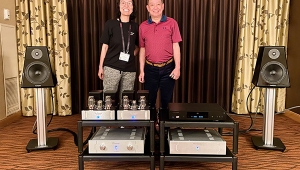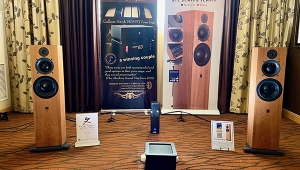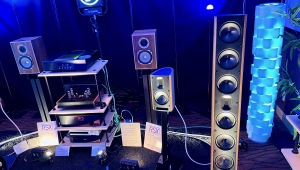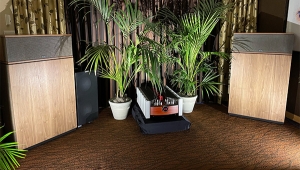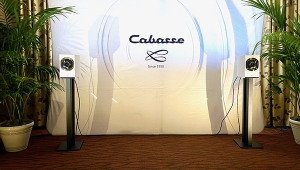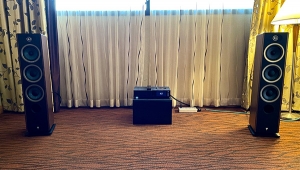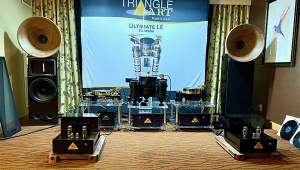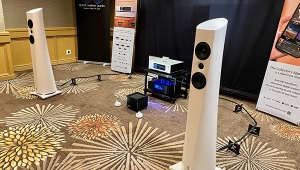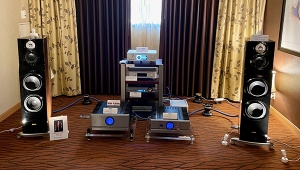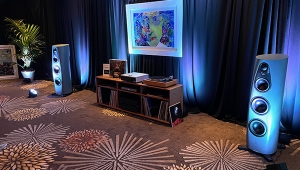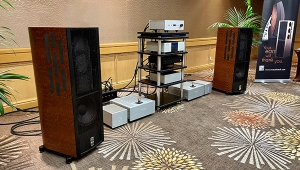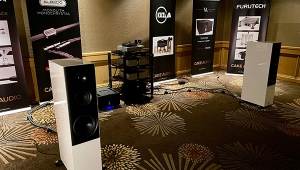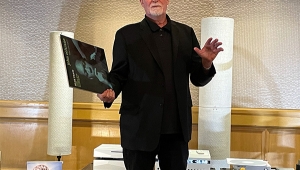| Columns Retired Columns & Blogs |
More from AGD
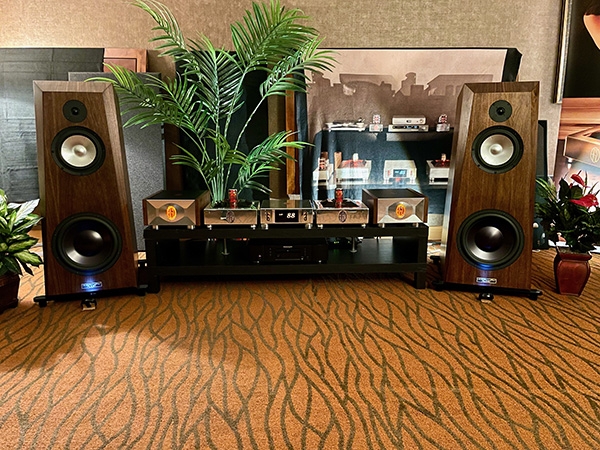
No sooner had I finished listening in the Audiophile Zone room than ATC's Leland Leard corralled me into the AGD room. There, Alberto Guerra, AGD President and CEO, introduced me to his AGD/Ocean Way system and discussed the rationale behind his "tube" GaN MOSFET class-D amplifiers.
First, the sound of the system. There was color—loads of color. "The silence is beautiful," I wrote, "and the system radiates color and light." Music glowed on a 24/44.1 file of Morten Lauridsen's recording of Magnificat, albeit with a touch of brightness in the treble. I would have liked far more volume on Eiji Oue's famed recording of Copland's Fanfare for the Common Man, but what I heard from the Red Book file sounded quite impressive. Doing the honors were the AGD Solo GaN monoblocks ($22,500/pair, which output up to 550W into 4 ohms), AGD Andante D/A preamplifier ($12,999), Ocean Way Audio Sausalito MkII loudspeakers ($29,000/pair), and a combination of AGD and Ocean Way cabling.
In the hallway, Guerra elaborated on Leard's claim that the GaN "tube," which, in reality, is a KT88/KT120 tube replica that holds AGD's gallium nitride technology, was much more than a "gimmick." Guerra, who worked on the team that developed the GaN technology at International Rectifier Corp., realized that by using GaN based MOSFETs he could achieve a much higher frequency of operation for class-D topology amplifiers. He could also create a more energy efficient and compact design compared to designs that use traditional silicon-based MOSFETs. However, because class-D had such a negative rap amongst audiophiles, he needed a way to get audiophiles to drop preconceptions and listen to his amps long enough to realize that AGD's GaN class-D sounds as good as it does.
Because many audiophiles associate tubes with good sound, Guerra decided to put his GaN technology into a tube as a means to hook people long enough to make a favorable impression during their first few seconds of listening. The tube also had a side benefit: because tubes are interchangeable, Guerra can easily upgrade his components by switching out "tubes" as improvements become available, as has happened already with his MkII.

Guerra pointed out other aspects of his design that, in his opinion, resolve the limitations of traditional class-D amplifications. Among other things, he described the benefit of an "RF" like layout to minimize parasitics, the use of ultra-low noise LDOs (low dropout linear voltage regulators) for the analog circuitries, what he claims to be the superior performance of the AGD's PWM (pulse width modulation) controller, and the audio-optimized design of his power supply board.
- Log in or register to post comments

